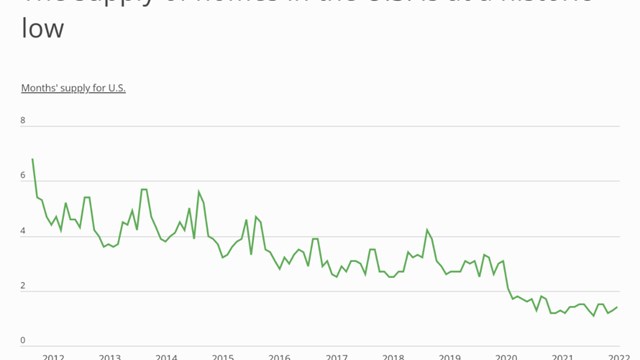If you thought asbestos was a problem, wait until you hear about lead. Found in 57 million private homes in the United States (two million in New York City), lead-based paint poisons young children, reduces IQs, and causes learning disabilities, hyperactivity, and behavioral problems. Children are regularly poisoned by eating dust created when lead-based paint is disturbed during a renovation, paint preparation, even from the friction of windows going up and down. Anyone who owns, rents, or sells pre-l978 residential property faces new laws, little insurance, and the specter of expensive lawsuits. As a result, co-op owners, co-op boards and co-op managing agents must educate themselves about the hazards of lead.
The New Law
Recently, lead issues have attracted increased media attention in part because of a new law that is scheduled to go into effect this October. (HUD and EPA officials predict that final regulations will be published in October 1995, and will become effec-tive six months to one year later.) The Lead Based-paint Hazard Reduction Act of 1992 (commonly called Title X or Title Ten) is the first federal law to cover private residential homes. Title X is misunderstood by many. The law does not require anyone to test for or remove lead paint. Instead, Congress hopes to achieve the same result by requiring people be informed through certain disclosures.
Title X will require owners of property built before 1978including co-opsto provide a lead hazard information pamphlet to prospective purchasers and tenants; disclose the presence of any known lead-based paint hazard on the property to a purchaser or tenant and provide a copy of anything in writing that exists; and permit the purchaser ten calendar days in which to conduct his own inspection for lead-based paint or a risk assessment.
Congress has put real teeth into this lawit imposes not only civil, but also criminal penalties. If a seller, landlord, or agent fails to comply, he or she is subject to treble damages, fines of up to $10,000 for each violation, and the possibility of imprisonment for up to one year. But don't worrya violation of this law will not void the contract for purchase and sale or lease.
The law applies to lease renewals only if the tenant has not previously received the lead hazard information. But, if the landlord learns new information, he or she is required to disclose that before a renewal.
The requirements do not apply to housing for the elderly or disabled, nor do they apply to an efficiency, studio or loft where the living area is unseparated from the sleeping areaunless a child under six years of age may live there. The law also excludes foreclosure sales and informal rental agreements that don't involve a written lease.
Litigation
Not only are tenants increasingly suing landlords for injuries caused by lead poisoning, they frequently win these cases. Recent jury verdicts to lead poisoned children in New York City have ranged from $1.7 million to $10 million. And a decision last May by the intermediate appellate court with jurisdiction over Manhattan and the Bronx makes it much easier for plaintiffs to win these lawsuits. The court in Juarez v. Wavecrest Management Team Ltd., held that a violation of Local Law 1 constitutes negligence per se, that a property owner has a continuing obligation to inspect for lead-based paint, and that it is not a valid defense to a negligence action that the property owner lacked either actual or constructive notice of a lead paint hazard.
Local Law 1 requires an owner of any building with three or more units to remove or cover lead-based paint if a child under the age of six resides in the unit. There's no doubt that Local Law 1 applies to co-ops, says Harold Shultz, Deputy Commissioner of the New York City Department of Housing Preservation and Development (HPD), the city agency that enforces Local Law 1. I don't profess to be an expert in co-op law, says Shultz, and there is always a real question as to where ultimate responsibility lies in a co-op, but I think who pays to remove lead paint in a co-op will depend on the proprietary lease.
Allan Pfeffer, a Manhattan lawyer who represents 58 co-ops, says he is not aware of any claim against a co-op by a shareholder on behalf of a lead poisoned child. Pfeffer adds, however, I see no reason why such a lawsuit couldn't be brought. Pfeffer thinks the issue hasn't come up yet because co-ops are generally better-maintained than rental buildings, so you don't see a lot of chipping and peeling paint. But he notes, I could see that a lead poisoning could occur as result of an apartment renovation or from alterations to a common area, like hallways or a lobby. Pfeffer suggests, Prudent co-ops should have lead inspections conducted and it would certainly be a wise idea before a renovation or even a window replacement.
Unavailability of Insurance
Pfeffer says, "I've made sure that all 58 co-ops that I represent have insurance coverage for lead poisoning this is critical." However, insurance companies are running scared and many are excluding lead coverage from their liability policies. The New York State Department of Insurance has granted 36 casualty insurance carriers the right to exclude liability coverage for lead poisoning and 35 additional insurers have sought the right to exclude such coverage to property owners.
Insurance coverage is, however, available. Barry Tillman, president of Surex Environmental Underwriters, says his company is the exclusive source nationally for lead-based paint liability insurance. Surex is currently working with more than 200 brokers in New York City, and we offer coverage with an aggregate limit from $50,000 to $5,000,000, through an A-IX rated carrier, says Tillman. The cost of coverage is as low as $25 per unit per year. Surex can offer occurrence-based coverage, as well.
What Should Co-op Owners and Boards Do?
The key here is information and a little perspective. If you live in a building built before 1940, you can be 90 percent certain that you have lead paint. But that paint isn't necessarily a hazard. Like asbestos, lead is dangerous only when it deteriorates or is disturbed. Therefore, property owners can protect their children and themselves from unwanted liability by having a lead risk assessment done, rather than merely testing for and confirming that they have lead paint. A risk assessment focuses on finding true lead paint hazards and guidance on how to respond tailored to almost every budget.
Co-op boards should have a thorough understanding of lead issues and laws knowledge is power and protection. The board may want to hold educational seminars or meetings for building residents to keep them informed. They should also consider developing a hazard control or in-place management program for shareholders and designing a long-term abatement plan to integrate into a regular maintenance schedule. Maintenance personnel doing any work that could create a lead hazard should be properly trained. The board should also require that properly trained lead abatement contractors be employed by shareholders who renovate. While it is virtually impossible to make a home lead free, everyone can make their pre-1978 property lead safe.
Marianna Koval is president of Lead Safe Home, Inc., a New York company that advises property owners, real estate professionals, and parents about lead in paint, drinking water, and soil.






2 Comments
Leave a Comment